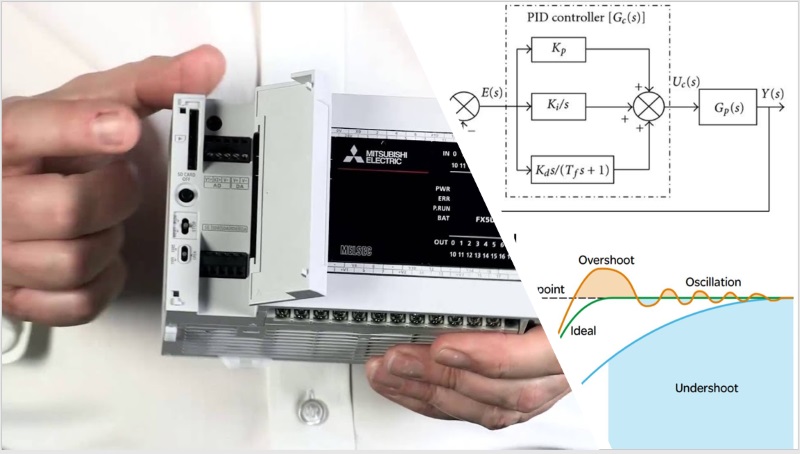Mitsubishi PLC FX5U DPLSY instruction. Configure pulse output, positioning parameters, and control Mitsubishi Servo Drives with precision
In industrial automation, controlling servo motors with precision is one of the most important tasks. Whether it’s motion control, robotics, or positioning applications, Mitsubishi PLCs and MELSERVO servo drives are widely used because of their accuracy and reliability.
One of the key instructions for pulse control in Mitsubishi PLC programming is the DPLSY instruction. But before you can use it, you must first configure the output settings for positioning in your PLC.
This blog will guide you step by step — from FX5U parameter setting to programming with the DPLSY instruction.
Step 1: Configure Output for Positioning in FX5U PLC Output Function Parameter.
When using FX5u to drive the Servo Motor and Servo drive, the DPLSY instruction can be used in two ways:
- FX5U mode
- FX3U compatible mode
Here, we’ll use FX5U mode.
Open Parameters
Go to:
Parameters → Module Parameter → High-Speed I/O
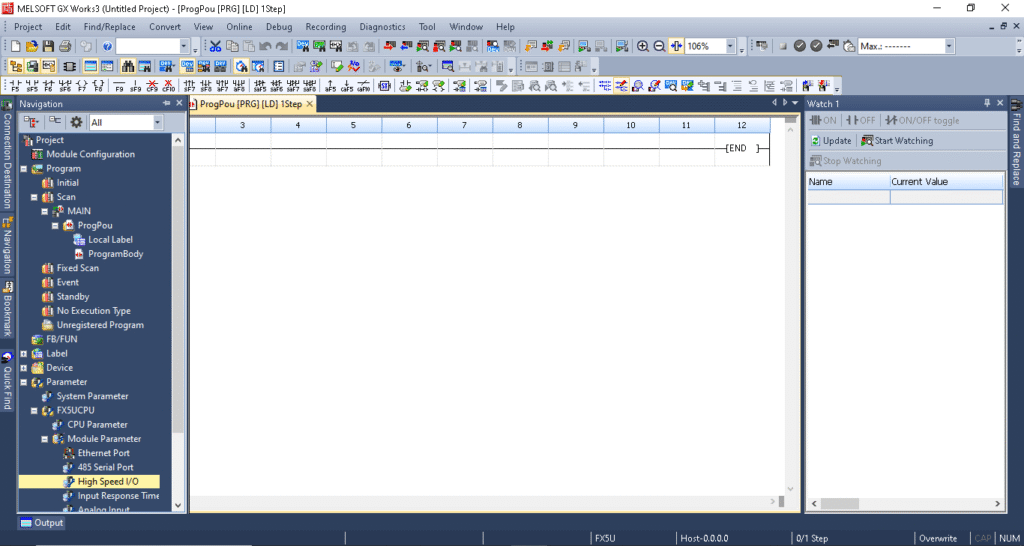
Configure Output Function
Next, navigate to:
Output Function → Positioning
Set the Pulse Output Mode:
- 0 – Not Use (default, disabled)
- 1 – Pulse/Sign
- 2 – CW/CCW (Clockwise / Counterclockwise)
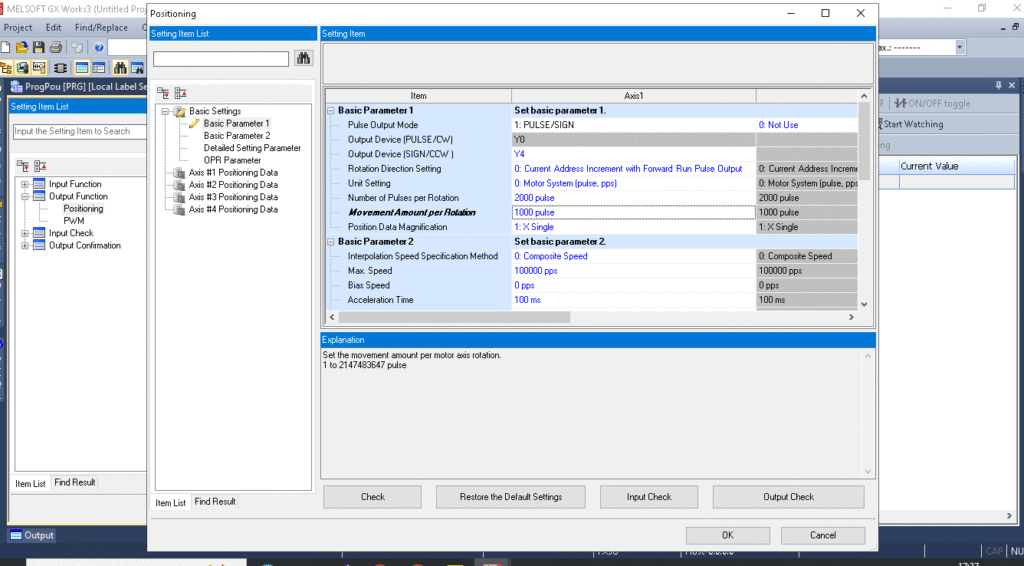
Select Pulse/Sign or CW/CCW depending on your servo drive type (Mitsubishi MELSERVO).
Generally when using the Stepper Motor, we use CW/CCW.
Set Maximum Speed
You can also define the maximum speed in pulses per second (pps).
This ensures the servo motor does not exceed safe operating limits.
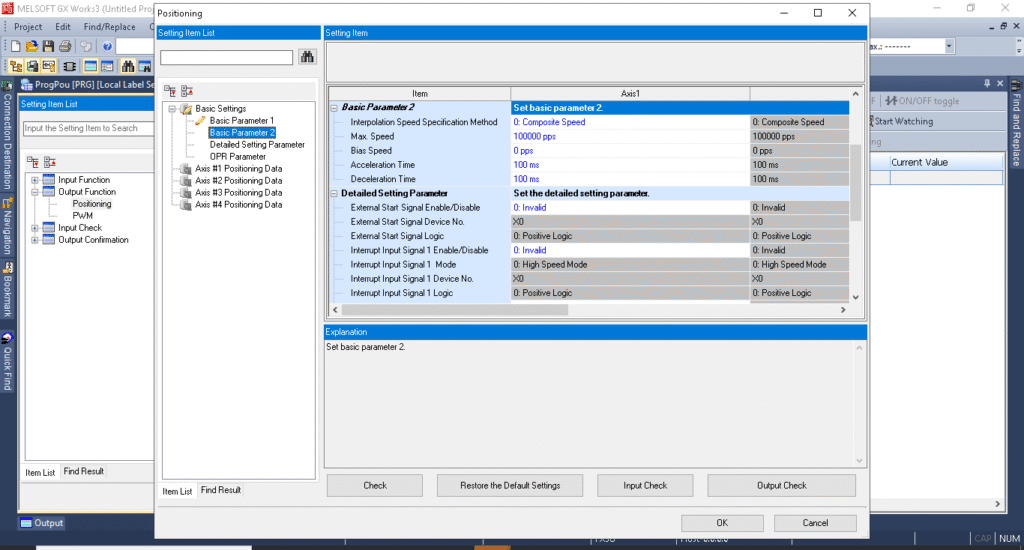
Now your Mitsubishi PLC FX5U is ready to execute the DPLSY instruction.
Step 2: Understanding the DPLSY Instruction
The DPLSY (Double Pulse Output) instruction is used to generate a 32-bit pulse train from the PLC to control a servo motor or actuator.
Basic Syntax:
DPLSY d, s, n
- d (output device): The axis/output terminal (e.g., Y0 for Axis 1).
- s (speed): Pulse frequency (e.g., K1000 = 1000 pulses/sec).
- n (pulses): Number of pulses. If n = 0, the output is unlimited.
Step 3: Using the DPLSY Instruction (Examples)
Case 1: Unlimited Pulse Output
For continuous motion, set n = 0.
DPLSY K1, K100000, K0
- Axis 1 (Y0) outputs at 1000000 pulses per second.
- Runs indefinitely until another command stops it.

Case 2: Fixed Number of Pulses
For precise movement, specify pulse count.
DPLSY K1, K1000, K500
- Axis 1 (Y0).
- Frequency: 1000 pulses per second.
- Outputs 500 pulses (exact movement). if Pulses per rotation is 2000 pulses/rotation then 2000/500 is 90 Degree.
Case 3: Variable Control with D Registers
Use D registers to dynamically set values during runtime.
DPLSY K1, D100, D200
- D100 = frequency.
- D200 = number of pulses.
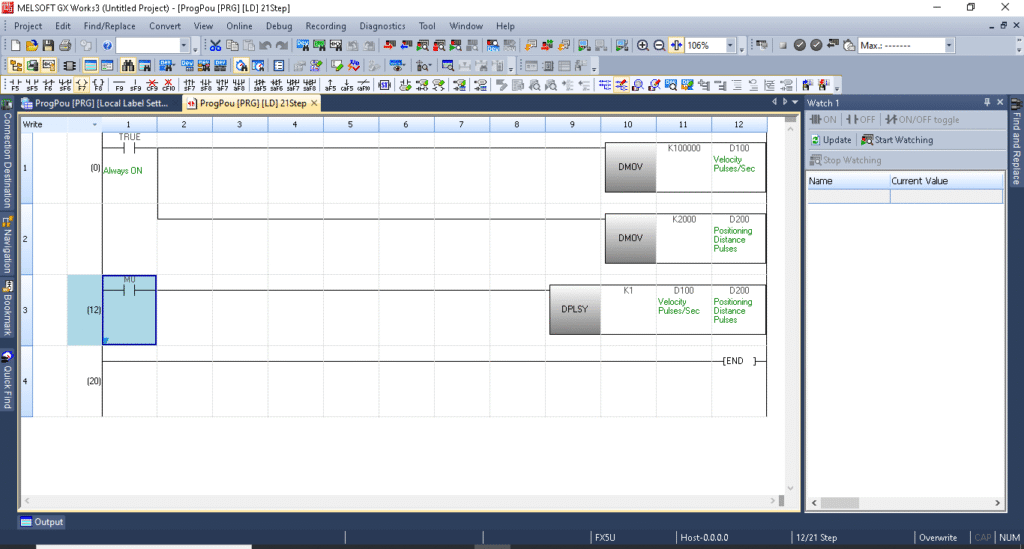
Useful for conveyors, and applications requiring real-time speed/position changes.
Step 4: Integration with Mitsubishi Servo Drives & DDRVI Instruction
The DPLSY instruction works seamlessly with Mitsubishi MELSERVO drives for smooth and accurate control.
- With DDRVI instruction, you can add feedback-based control.
- This ensures the servo motor reaches its exact position with high precision.
- Ideal for robotics, packaging, and other high end applications.
To successfully use the DPLSY instruction in Mitsubishi PLC FX5U:
- First, set up the output for positioning in module parameters.
- Then, program the DPLSY instruction for unlimited, fixed, or variable pulse outputs.
- Make sure the wiring is as per the settings.
FAQ: DPLSY in Mitsubishi PLC
1. What is the difference between PLSY and DPLSY?
- PLSY = 16-bit pulse output.
- DPLSY = 32-bit pulse output (better for servo systems).
2. Can I use DPLSY in FX3U?
Yes, but in FX3U compatible mode. For new projects, FX5U mode is recommended.
3. How do I stop unlimited pulses (n=0)?
Program a stop condition in your PLC logic to turn off the output (e.g., reset Y0).
4. Which pulse mode should I select — Pulse/Sign or CW/CCW?
It depends on your Servo Drive wiring. Check the servo manual before choosing.
5. Can DPLSY be used for variable speed control?
Yes. Use D registers to change pulse frequency and count at runtime.
.

